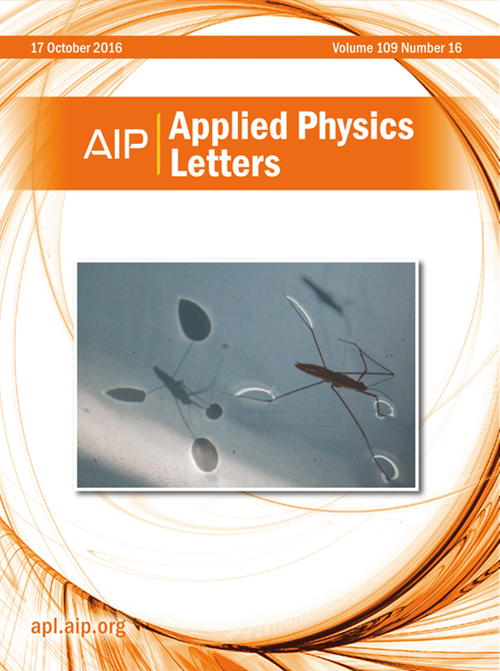缺陷纳米碳材料电阻负线性温度系数的机理
IF 3.5
2区 物理与天体物理
Q2 PHYSICS, APPLIED
引用次数: 0
摘要
本文介绍了在含缺陷纳米碳材料中常见的负线性温度系数机制的证据结果。单壁碳纳米管(CNTs)在1200 ~ 3000℃的高温下退火。这些样品在原始状态下的碳纳米管之间表现出一般的跳变导电行为。然而,高温退火后的样品表现出负温度系数的电阻变化。最近,我们提出电阻行为的负线性温度依赖的起源是由于在含有缺陷的平坦石墨烯片上发生的弗里德尔振荡引起的散射现象。事实上,从高分辨率透射电镜的横截面图像中,我们发现CNTs的管状结构在高温退火样品中坍塌并相互融合,呈现出堆叠的扁平石墨结构。这些结果表明,Friedel散射现象源于在含缺陷纳米碳材料中广泛观察到的负线性温度系数。这种负线性温度系数为纳米碳材料在热敏电阻中的应用提供了重要的信息,这最近引起了人们的极大关注,并为这种热敏电阻的最佳设计指南提供了重要的信息。此外,基于Friedel散射现象的非零电流和非发散电阻行为为量子计算、密码学和通信等量子研究领域提供了更稳定的测量条件。本文章由计算机程序翻译,如有差异,请以英文原文为准。
Mechanism of the negative linear temperature coefficient of resistance in defective nanocarbon materials
This paper presents the evidential results of the negative linear temperature coefficient mechanism commonly observed in defect-containing nanocarbon materials. Single-walled carbon nanotubes (CNTs) were annealed at high temperatures ranging from 1200 to 3000 °C. These samples exhibited a general hopping conduction-like behavior between the CNTs in the pristine state. However, the high-temperature annealed samples exhibited a resistance change with a negative temperature coefficient. Recently, we proposed that the origin of this negative linear temperature dependence of resistance behavior is a scattering phenomenon due to Friedel oscillations occurring in a flat graphene sheet containing defects. In fact, from the cross-sectional high-resolution transmission electron microscopy images, we found that the tube structure of the CNTs collapsed and fused with each other in the high-temperature annealed samples, revealing a stacked, flat graphite structure. These results show that the Friedel scattering phenomenon originates from the negative linear temperature coefficient widely observed in defect-containing nanocarbon materials. This negative linear temperature coefficient provides important information on the application of nanocarbon materials to thermistors, which have recently attracted significant attention, and on the optimal design guidelines for such thermistors. Moreover, the nonzero current and nondivergent resistance behavior based on the Friedel scattering phenomenon provide more stable measurement conditions for the quantum research field, including quantum computing, cryptography, and communications.
求助全文
通过发布文献求助,成功后即可免费获取论文全文。
去求助
来源期刊

Applied Physics Letters
物理-物理:应用
CiteScore
6.40
自引率
10.00%
发文量
1821
审稿时长
1.6 months
期刊介绍:
Applied Physics Letters (APL) features concise, up-to-date reports on significant new findings in applied physics. Emphasizing rapid dissemination of key data and new physical insights, APL offers prompt publication of new experimental and theoretical papers reporting applications of physics phenomena to all branches of science, engineering, and modern technology.
In addition to regular articles, the journal also publishes invited Fast Track, Perspectives, and in-depth Editorials which report on cutting-edge areas in applied physics.
APL Perspectives are forward-looking invited letters which highlight recent developments or discoveries. Emphasis is placed on very recent developments, potentially disruptive technologies, open questions and possible solutions. They also include a mini-roadmap detailing where the community should direct efforts in order for the phenomena to be viable for application and the challenges associated with meeting that performance threshold. Perspectives are characterized by personal viewpoints and opinions of recognized experts in the field.
Fast Track articles are invited original research articles that report results that are particularly novel and important or provide a significant advancement in an emerging field. Because of the urgency and scientific importance of the work, the peer review process is accelerated. If, during the review process, it becomes apparent that the paper does not meet the Fast Track criterion, it is returned to a normal track.
 求助内容:
求助内容: 应助结果提醒方式:
应助结果提醒方式:


